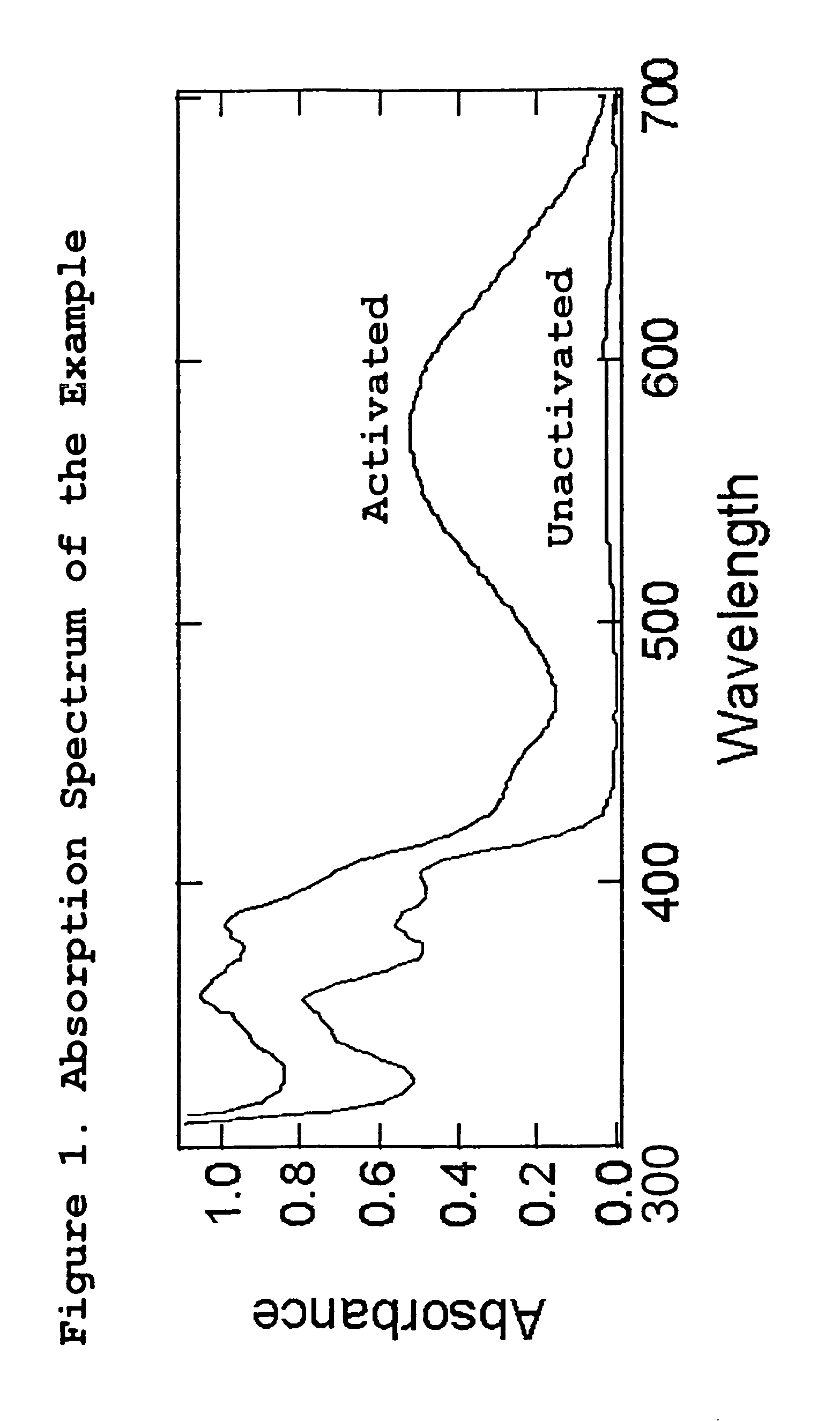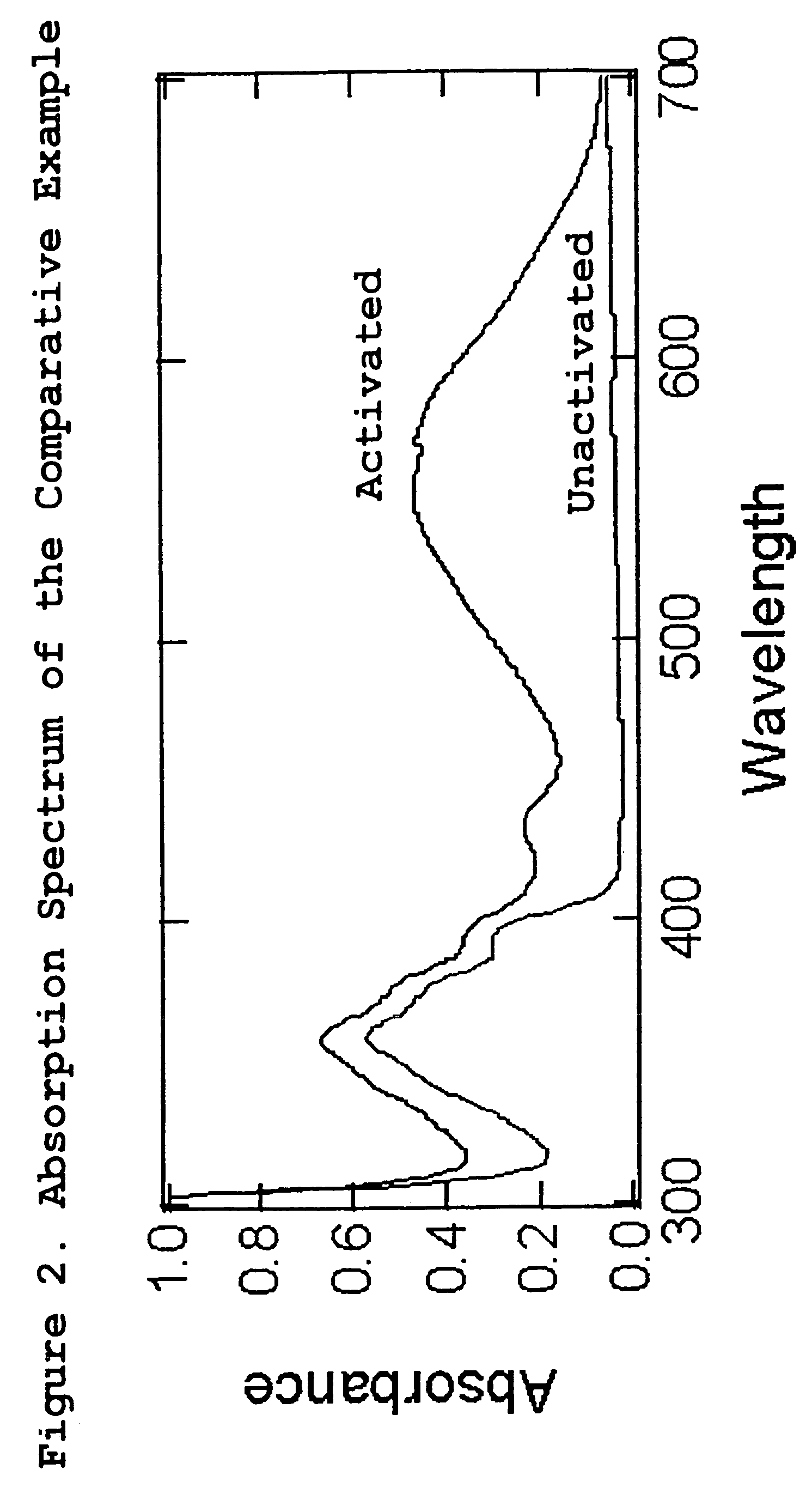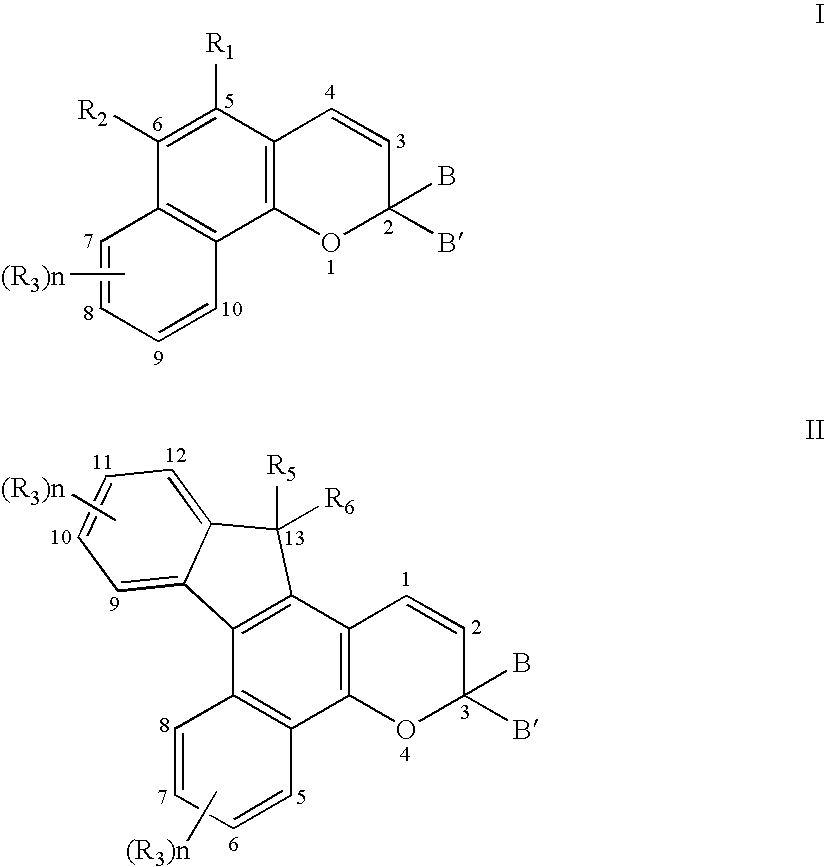Photochromic ocular devices
a photochromic ocular and ultraviolet radiation technology, applied in the field of photochromic ocular devices, can solve the problems of limited ability of commercial contact lenses containing contact lenses that do not meet american national standards, and difficult to incorporate ultraviolet radiation absorbing materials into these lenses, etc., to achieve the effect of increasing visible radiation absorption and ultraviolet radiation absorption
- Summary
- Abstract
- Description
- Claims
- Application Information
AI Technical Summary
Problems solved by technology
Method used
Image
Examples
example
[0110]The Ultraviolet Photochromic Performance Test was conducted on the lens by measuring the activated and unactivated spectra over a wavelength range of from 300 to 700 nm and determining the ratio of increased ultraviolet radiation absorbance to increased visible radiation absorbance as described hereinbelow.
[0111]A hydrophilic contact lens composed of methylmethacrylate and N-vinylpyrrolidone in a 28:72 weight ratio, which composition is equivalent to that of the Rythmic® contact lens available from Essilor International, except that it did not contain a UV absorber, was used. The lens, in the hydrated state, was immersed in a vessel containing 2 milliliters (mL) of dimethyl sulfoxide (DMSO) solution having 0.05 weight percent of 3-(4-methoxyphenyl)-3-phenyl-6,11-dimethoxy-13-methyl-13-(2-(2-hydroxyethyl)ethoxy)-3H,13H-indeno[2,′3,′3,4]-naphtho-[1,2-b]pyran. The aforementioned weight percent is based on the total weight of the solution. The immersed lens was stirred for a perio...
PUM
| Property | Measurement | Unit |
|---|---|---|
| transmittance | aaaaa | aaaaa |
| transmittance | aaaaa | aaaaa |
| wavelengths | aaaaa | aaaaa |
Abstract
Description
Claims
Application Information
 Login to View More
Login to View More - R&D
- Intellectual Property
- Life Sciences
- Materials
- Tech Scout
- Unparalleled Data Quality
- Higher Quality Content
- 60% Fewer Hallucinations
Browse by: Latest US Patents, China's latest patents, Technical Efficacy Thesaurus, Application Domain, Technology Topic, Popular Technical Reports.
© 2025 PatSnap. All rights reserved.Legal|Privacy policy|Modern Slavery Act Transparency Statement|Sitemap|About US| Contact US: help@patsnap.com



